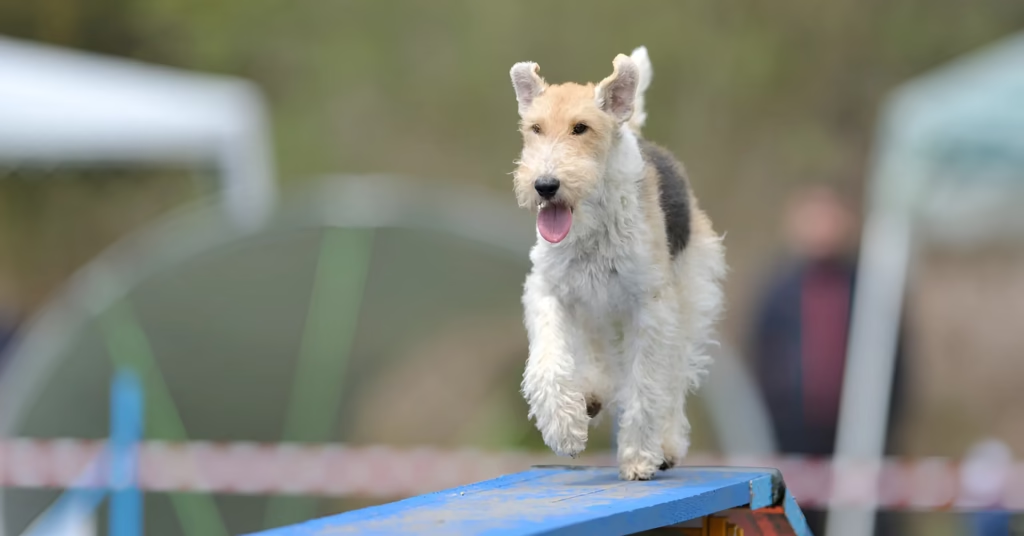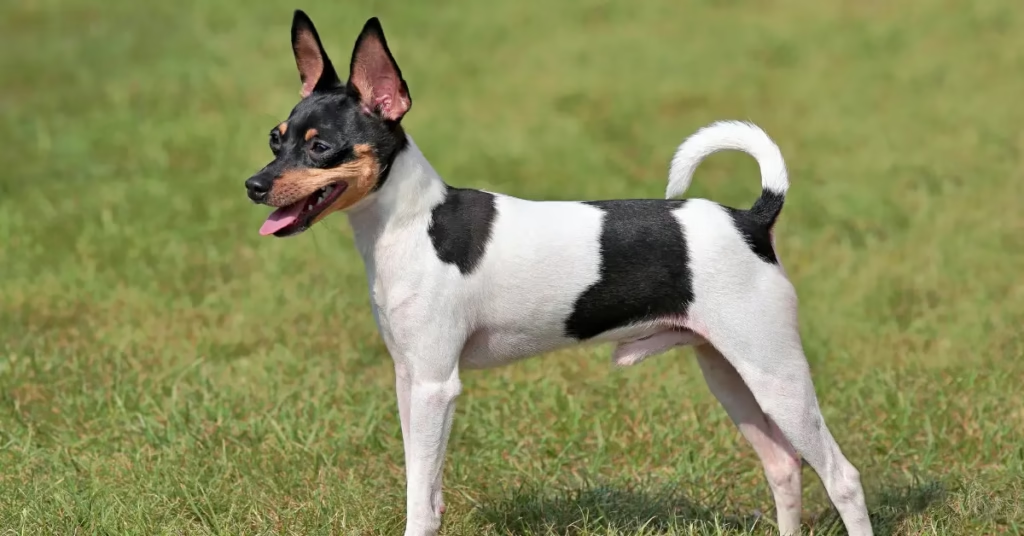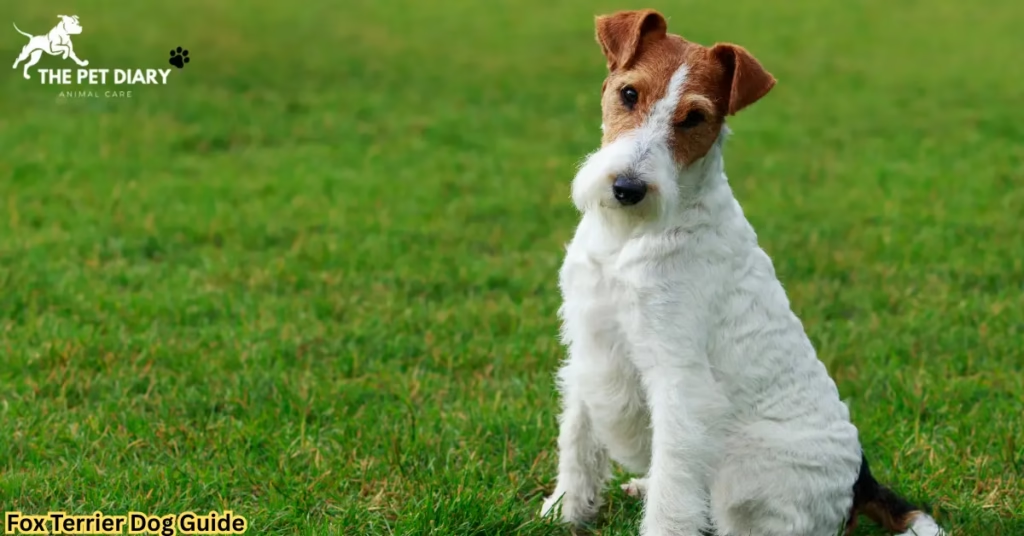Introduction to the Fox Terrier Dog Breed Guide
The Fox Terrier is a lively, intelligent, and affectionate breed that has captured the hearts of dog lovers worldwide. Known for their energetic personality and distinctive appearance, fox terrier dog varieties each have unique traits and care requirements. This comprehensive Fox Terrier Care Guide covers everything you need to know, from history and temperament to grooming and adoption, to help you decide whether this charming breed is right for you.
History & Origin of the Fox Terrier
Early Development
The fox terrier smooth and wire fox terrier were bred in England in the 18th century to assist in fox hunting. Their primary role was to flush foxes out of their dens, and their name reflects this purpose. Hunters valued their courage and keen sense of smell, traits that remain evident today.
Recognition and Popularity
Over time, the breed split into different types, including the Smooth Fox Terrier and the Wire Fox Terrier, both recognized by major kennel clubs. Their courage, alertness, and adaptability made them invaluable to hunters and beloved companions for families worldwide.
Global Spread and Modern Roles
Fox Terriers quickly gained popularity beyond England, appearing in dog shows and as beloved household pets. Today, they participate in activities ranging from agility competitions to therapy work, proving their versatility and charm.
Types of Fox Terriers
Fox Terriers are primarily divided into three main types, each with specific characteristics and grooming needs.
Smooth Fox Terrier
The smooth fox terrier features a sleek, short coat that requires minimal grooming. Known for their elegant appearance and playful, curious nature, Smooth Fox Terriers excel in agility and obedience competitions. Their low-shedding coat makes them a great choice for busy owners.
Wire Fox Terrier
The wire fox terrier is instantly recognizable by its dense, wiry coat. Sometimes referred to as the wire hair fox terrier, wire coat fox terrier, or wirehaired fox terrier, this variety requires regular grooming to maintain its distinctive look. Many families love the breed’s lively and friendly temperament, as well as their fearless attitude.
Toy Fox Terrier
The toy fox terrier is a smaller variation, perfect for apartment living while still retaining the energy and intelligence of its larger cousins. Breeders often list them under terms like toy fox terrier dog breeds. Despite their size, they remain active and need regular exercise to stay healthy and happy.
Miniature & Mixed Varieties
There are also miniature fox terrier dog options for those seeking a compact companion. Crossbreeds like the fox terrier chihuahua mix or fox terrier and chihuahua mix are delightful hybrids known for their spirited nature and adaptability to different lifestyles.
Comparison Table
| Type of Fox Terrier | Size Range | Coat Type | Grooming Needs | Key Traits |
|---|---|---|---|---|
| Smooth Fox Terrier | 15-18 lbs | Short, smooth | Low | Intelligent, Curious |
| Wire Fox Terrier | 15-18 lbs | Dense, wiry | Moderate to High | Energetic, Friendly |
| Toy Fox Terrier | 3-7 lbs | Short, smooth | Low | Playful, Adaptable |
| Mini Fox Terrier | 3-7 lbs | Short, smooth | Low | Alert, Lively |
Temperament and Personality

Energetic and Intelligent
Fox Terriers are celebrated for their intelligence, alertness, and boundless energy. They are excellent companions for active families and thrive on regular exercise and mental stimulation. Their quick thinking and keen senses make them natural problem solvers.
Family Compatibility
Whether you choose a mini fox terrier, a standard fox terrier dog, or a mix such as the fox terrier chihuahua mix, you can expect a lively personality that enjoys both playtime and affection. They are typically good with children when properly socialized.
Social Traits/ Fox Terrier Care Guide
Fox Terriers are naturally protective and may be wary of strangers, which makes early socialization critical. With consistent training, they become loving, loyal companions.
Grooming & Coat Care
Smooth Fox Terrier Care
The Smooth Fox Terrier only requires weekly brushing to remove loose hairs and maintain a glossy coat. Bathing once a month is usually sufficient.
Wire Fox Terrier Care
The wire fox terrier dog needs regular hand-stripping or professional grooming to keep the wire coat fox terrier texture. This is especially important for wire fox terrier puppies as their coat develops. Professional grooming every 6–8 weeks helps maintain their signature look.
Toy and Miniature Fox Terrier Care
The toy fox terrier and mini fox terrier need occasional brushing to keep their short coats neat. A mild shampoo keeps their skin healthy and free of irritation.
Grooming Schedule Table
| Grooming Task | Smooth | Wire | Toy/Mini |
| Brushing | Weekly | 2-3 times/week | Weekly |
| Professional Groom | Not needed | Every 6-8 weeks | Not needed |
| Nail Trimming | Monthly | Monthly | Monthly |
| Ear Cleaning | Monthly | Monthly | Monthly |
Training & Socialization/Fox Terrier Care Guide

Early Training/ Fox Terrier Care Guide
Fox Terriers are highly trainable but can be strong-willed. Start obedience training early, focusing on positive reinforcement. Reward-based methods work best for these smart dogs.
Social Interaction
Socialization with other pets and people is crucial to prevent territorial behavior. The miniature fox terrier dog responds particularly well to short, fun training sessions. Puppy classes can help them learn to interact politely.
Advanced Training
Activities like agility, scent tracking, and trick training keep their sharp minds engaged and provide excellent exercise. Many wire fox terrier owners find that mental challenges are as important as physical activity.
Health Issues and Lifespan
Common Conditions
Generally healthy, Fox Terriers live between 12–15 years. Common health concerns include hip dysplasia, allergies, epilepsy, and certain eye conditions such as cataracts.
Preventive Care
Regular vet visits and a balanced diet help maintain optimal health across all types, including the wire fox terrier, smooth fox terrier, and toy fox terrier. Routine dental care is also essential.
Senior Care
As Fox Terriers age, joint supplements and regular low-impact exercise can support mobility. Annual senior checkups help catch any issues early.
Feeding and Nutrition
Balanced Diet
A high-quality, protein-rich diet is essential. Adjust portion sizes based on age, size, and activity level to prevent obesity, especially for the smaller toy fox terrier and mini fox terrier.
Feeding Tips
Divide meals into two servings per day to maintain energy levels. Always provide fresh water, and consider adding omega-3 supplements for a healthy coat.
Exercise Needs

Daily Requirements/ Fox Terrier Care Guide
These energetic dogs need at least 30–60 minutes of daily exercise. Activities like fetch, agility training, and long walks are ideal. The wire terrier dog enjoys interactive games that challenge their intelligence.
Indoor and Outdoor Activities
If outdoor space is limited, indoor games like hide-and-seek or puzzle toys can help burn energy. Regular playtime keeps them mentally stimulated and physically fit.
Adoption & Rescue Options
Rescue Organizations
Consider adopting through organizations like Wire Fox Terrier Rescue, Wire-haired Fox Terrier Rescue, Wire Fox Terrier adoption, or a local fox terrier rescue group. Adoption is a rewarding way to provide a loving home to a dog in need.
Adoption Tips
Ask about the dog’s medical history and temperament before adoption. Meet potential pets in person to ensure a good match for your household.
Choosing a Breeder
Finding Responsible Breeders
If you decide to buy a puppy, select a reputable breeder. Look for certified wire fox terrier breeder listings or responsible toy fox terrier breeders who prioritize health and temperament over appearance.
Questions to Ask Breeders
Request health clearances, ask to meet the puppy’s parents, and inquire about socialization practices. Responsible breeders welcome questions and provide support even after purchase.
Mixing with Other Breeds
Popular Crossbreeds
Crossbreeds such as the fox terrier chihuahua mix or fox terrier and chihuahua mix combine the spirited nature of both breeds, creating delightful companions with unique traits. These mixes often inherit the Fox Terrier’s intelligence and the Chihuahua’s bold personality.
Care for Mixes
Mixed breeds require the same balanced diet, grooming, and regular exercise as purebred Fox Terriers. Early socialization ensures they develop into well-rounded pets.
Cost, Living Space & Family Suitability
Cost Considerations
Fox Terriers adapt well to both apartments and houses, provided they get enough exercise. Costs vary depending on whether you adopt or buy from a breeder, but expect to budget for grooming, food, and regular vet care. Initial costs can include vaccinations, spay/neuter procedures, and training classes.
Living Space Needs
Despite their high energy, even a toy fox terrier or mini fox terrier can thrive in smaller homes as long as they get adequate outdoor activity. Daily walks and interactive play sessions are key to keeping them happy.
Family Compatibility
Their playful and affectionate nature makes Fox Terriers great companions for families with older children. Early training helps them coexist peacefully with other pets.
Conclusion of Fox Terrier Care Guide:
The Fox Terrier is a dynamic, intelligent, and loving companion suited for active families or individuals ready to meet their exercise and training needs. Whether you choose a wire fox terrier, smooth fox terrier, toy fox terrier, or one of the charming mixes, you’ll gain a loyal friend full of personality and charm. Visit thepetdiary.com.
FAQs of Fox Terrier Care Guide:
Q1. What is the average lifespan of a Fox Terrier?
A healthy Fox Terrier typically lives 12–15 years when provided with balanced nutrition, regular exercise, and routine veterinary care.
Q2. How much grooming does a Wire Fox Terrier need?
Wire Fox Terriers require brushing two to three times a week and professional hand-stripping or grooming every 6–8 weeks to maintain their wiry coat.
Q3. Do Fox Terriers shed a lot?
Fox Terriers are moderate shedders. The Smooth Fox Terrier sheds lightly year-round, while the Wire Fox Terrier sheds very little if their coat is hand-stripped regularly. Weekly brushing keeps loose hair under control.
Q4. Is the Fox Terrier good with children and other pets?
Yes, when socialized early. The Fox Terrier Dog Guide recommends supervised play with young children and gradual introductions to other pets.
Q5. What is the difference between Smooth and Wire Fox Terriers?
The Smooth variety has a short, sleek coat that sheds lightly, while the Wire variety sports a dense, wiry coat that needs more maintenance.
Q6. How much exercise does a Fox Terrier need each day?
Plan for at least 30–60 minutes of vigorous activity daily—walks, fetch, or agility games keep them healthy and happy.
Q7. Where can I adopt or rescue a Fox Terrier?
Look for breed-specific rescues such as Wire Fox Terrier Rescue or local shelters that specialize in terrier breeds.
Q8. What should I feed my Fox Terrier?
Provide a high-quality, protein-rich dog food, divided into two meals a day. Consult your vet for portion sizes based on age and activity.
Q9. Are Toy Fox Terriers suitable for apartments?
Absolutely. Their small size and adaptable nature make them excellent apartment dogs, provided they receive daily exercise.


